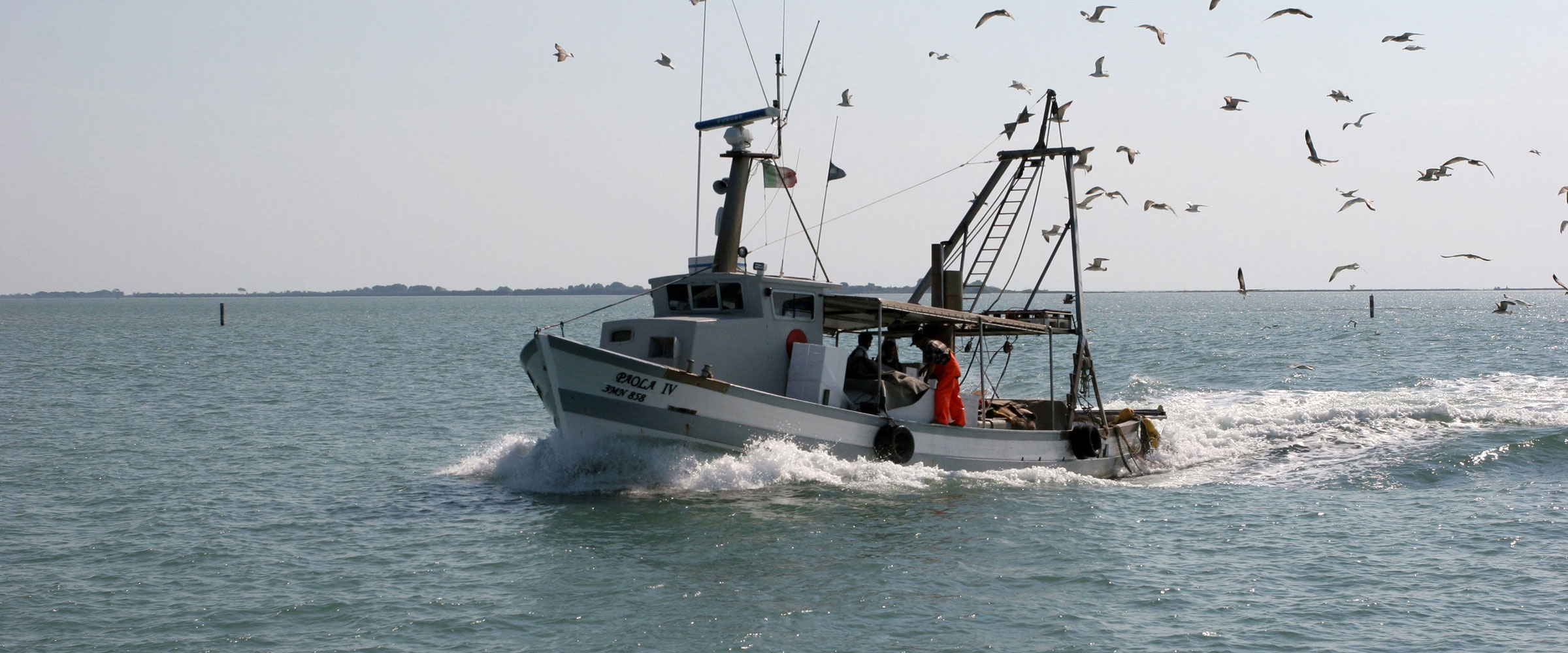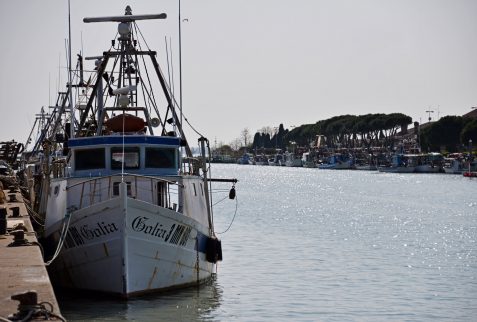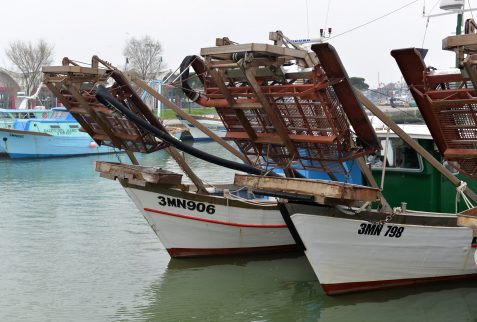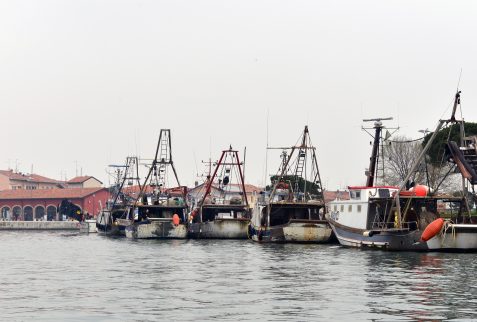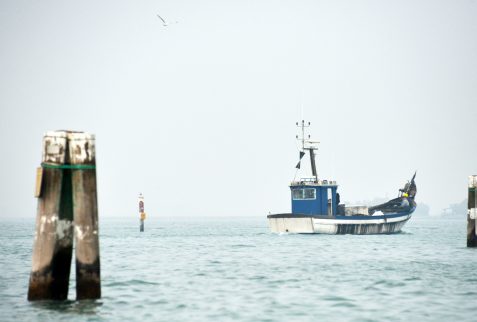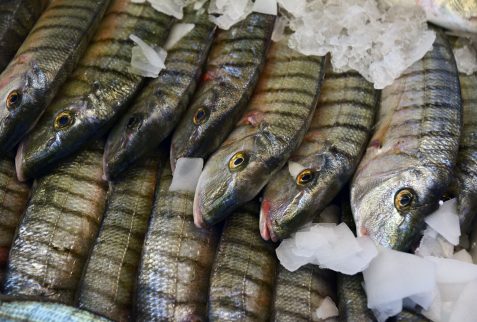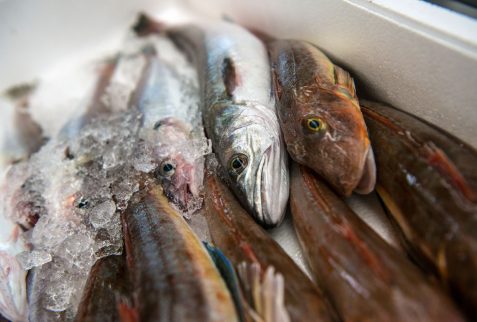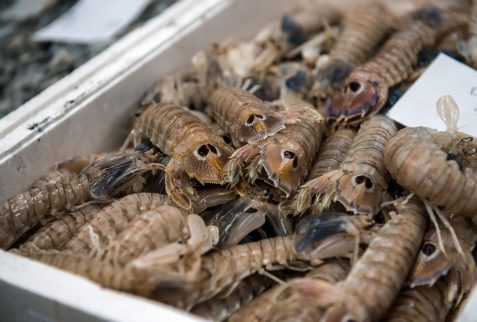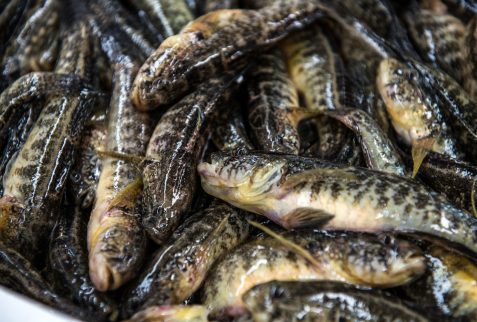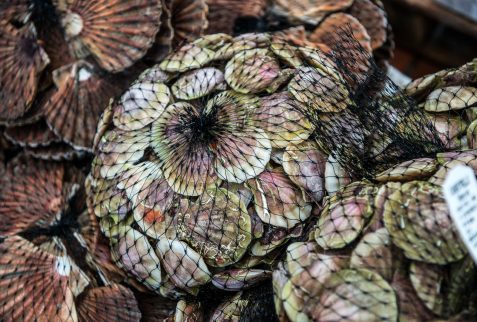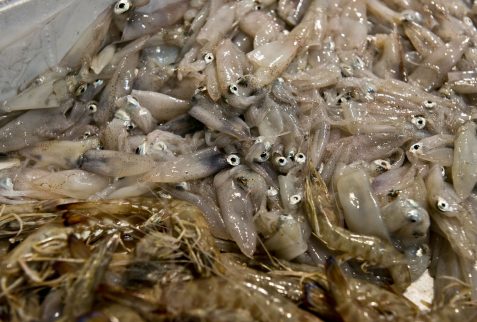Deep sea fishing
Text by Cristiano Mauro.
Sea fishing can be broken down into five subcategories: drift netting, fishing with cuttlefish traps, shrimp fishing, trawling and fishing using hydraulic dredges.
Drift netting is carried out by small-medium sized boats that drop the nets at night and then retrieve them, or drop them in the evening and retrieve them before sunrise. The size of the fish caught depends on the size of the net’s mesh. This method is used to catch cuttlefish in the spring and other fish throughout the rest of the year: there are optimal catches in the autumn and winter months when the fish migrate from the lagoon towards the sea in order to lay their eggs. This is also a traditional fishing method.
Fishing using cuttlefish traps involves lowering a series of traps, one attached to the other, near to the beds of seagrass in front of the beaches, where the cuttlefish arrive in spring to lay their eggs. The cuttlefish are caught in this way and, once the traps are emptied, they are thrown back in. Shrimp fishing uses small iron cages complete with bait (sardine), which the shrimps can enter but can’t escape from. After being emptied, bait is put back into the traps and they are once again lowered into the sea, ready to fish again.
Trawling covers two activities: one using the “cocia” net and one using harpoons.
The “cocia” net is funnel-shaped and is pulled along by large boats. This net is held open by two divergent pieces that are connected to the boat by steel cables. These use the concept of bearing capacity to keep the fishing net under the water so the fish can enter. The fish then end up in a bag at the bottom of the net which is then hoisted onto the boat and emptied. The net is then put back in the water and, once the cords have been thrown in, they are attached to the divergent pieces. The equipment is left in the water and, once the correct length of steel cable has been lowered, the boat sets the right speed to make the net work correctly. There are two types of cocia net: benthic that work in contact with the seabed and catch benthic fish/invertebrate species, and semi-pelagic that are only partially in contact with the seabed and allow for pelagic fish to be caught.
Harpoon trawling involves lowering a frame with spikes that scrape the seabed and channel fish/invertebrates into the bag. This type of fishing allows for benthic organisms to be caught.
Fishing using hydraulic dredges allows for invertebrate species to be caught, mainly “fasolari” (a kind of oyster) and razor clams. Medium-large sized boats lower an anchor into the sea and the chain attached to it. At this point, the basket is lowered from the front of the boat and the anchor chain is pulled back up, causing the boat to move back. The organisms collect inside the basket, allowing them to be caught as the seabed is scraped and a strong jet of water is used to move the sediment and wash the product. A commercially-sized mallet is used to hold the organisms in place. Once complete, the basket is pulled up and the catch is sorted. The basket is then lowered again and again. This type of fishing is managed through a consortium that has set limits that must be respected, thereby guaranteeing the availability of resources in the long run.

